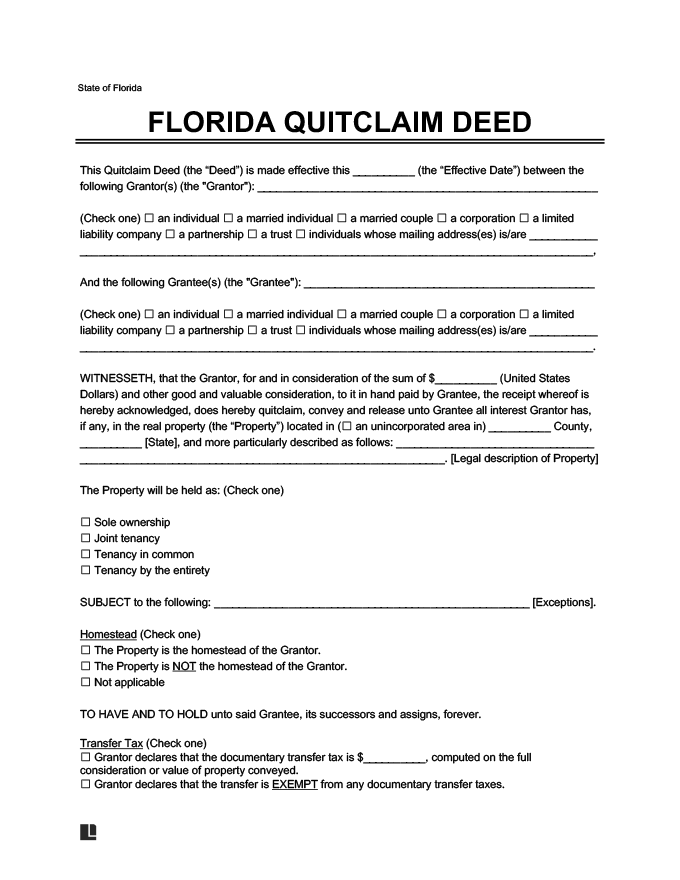Correctly filing a quitclaim deed in Florida is critical to ensuring that the process goes smoothly and is legally completed. If you fail to fill out your form properly or to include all relevant documentation, it could prevent the property transfer from going through.
Step 1: Research Your County
Contact the county clerk’s office in the county where the property is located or look it up online. Determine:
- The registration fees in your county.
- Any extra paperwork, such as a Property Transfer Information Form, that may be required for your county.
- The Appraiser’s Parcel ID (Fla. Stat. § 689.02), which is the unique identification number assigned to a property by the city or county. It is mandatory to include this number on relevant forms, or at least provide a designated space for it.
- Whether you will need to provide a self-addressed, stamped envelope (SASE) for the return of your quitclaim deed and documentation (some counties require it).
Step 2: Gather Your Documents
Not only do you need a copy of your deed, you need any other necessary materials, which may include:
- The current title for the property, since it contains relevant information like the legal description.
- The Property Transfer Information Form for your county.
- Your ID, since you will need to provide proof of identity to the notary.
Gathering your materials ahead of time will make it easier to prepare your quitclaim deed and ensure that you have everything you need.
Step 3: Fill Out the Quitclaim Deed
Prepare your document using the language and information laid out in Fla. Stat. § 689.025 or a quitclaim deed form. Here is what you will typically need to fill out the form:
- Party Information: This includes the names and addresses of both the person giving the property (grantor) and the person receiving it (grantee). If the grantor is married, their spouse’s name and signature should be on the deed, even if the property is only in the grantor’s name.
- Sale Price: The consideration paid for the property.
- Property Details: This covers the property’s location, unique parcel ID number, when it was officially recorded, and legal description.
- Previous Ownership Information: This section includes details about any previous transfers of ownership, like the volume and page number of records and the original owner.
- Signatures: The grantor, their spouse (if they’re married), and any witnesses must sign the deed in the presence of a notary public.
Consideration Requirement
For a deed to be legally valid in Florida, it must involve consideration, which refers to the price or value the buyer gives the seller for the property. If you wish to transfer ownership without payment, you can specify a nominal consideration of $10.
Step 4: Visit a Notary
In Florida, a Quitclaim Deed must be signed by the grantor, and if married, both the grantor and their spouse, even if only the grantor’s name is on the title. The signature will be on the last page of the document, above the grantor’s printed name.
This signing occurs in the presence of one or more witnesses and a notary public, per Fla. Stat. § 689.01.
The notary will verify the identities of the signers and ensure the witnesses sign in their presence before notarizing the deed. After notarization, the grantor should deliver the signed and notarized deed to the grantee. The grantor might also ask the grantee to sign a receipt confirming they have received the deed.
Step 5: Take the Form to the County Clerk’s Office
The grantee should make copies of the Quitclaim Deed and record it at the Florida County Clerk of Court office where the property is located. This means submitting the document to the county’s official records and paying a fee for this service. The fee is typically about $10 for a one-page quit claim deed, but fees may vary by county, so you should research your particular county ahead of time.
Recording the Quitclaim Deed publicly shows the grantee as the new property owner, completing the title transfer.
